In the first quarter of 2025, China’s new energy vehicle exports kicked off with a strong momentum.
According to the export data of new energy vehicles from Gasgoo Automotive Research Institute, the top three export destinations, Mexico, the United Arab Emirates, and Russia, contributed a total of more than 300,000 vehicles, and the total scale of the top ten markets exceeded 600,000 vehicles, an increase of 6.5% over the same period last year. In detail:
• No.1: Mexico. In March, China exported 41,000 new energy vehicles to Mexico; from January to March, a total of 109,000 vehicles, a year-on-year increase of 25.5%.
• No.2: UAE. In March, China exported 34,000 new energy vehicles to the UAE; from January to March, a total of 101,000 vehicles, a year-on-year surge of 95.45%.
• No.3: Russia. In March, China exported 40,000 new energy vehicles to Russia; from January to March, a total of 94,000 vehicles, a year-on-year decline of 40.17%.
• No.4: Belgium. In March, China exported 19,000 new energy vehicles to Belgium; from January to March, a total of 68,000 vehicles, a year-on-year increase of 1.11%.
• No.5: Saudi Arabia. In March, China exported 20,000 new energy vehicles to Saudi Arabia; from January to March, the cumulative export was 56,000 vehicles, a year-on-year increase of 35.63%.
• No.6: Britain. In March, China exported 14,000 new energy vehicles to Britain; from January to March, the cumulative export was 50,000 vehicles, a year-on-year decrease of 9.16%.
• No.7: Brazil. In March, China exported 24,000 new energy vehicles to Brazil; from January to March, the cumulative export was 49,000 vehicles, a year-on-year decrease of 15.76%.
• No.8: Australia. In March, China exported 19,000 new energy vehicles to Australia; from January to March, the cumulative export was 48,000 vehicles, a year-on-year increase of 30.33%.
• No.9: Spain. In March, China exported 11,000 new energy vehicles to Spain; from January to March, the cumulative export was 36,000 vehicles, a year-on-year increase of 53.08%.
• No.10: Italy. In March, China exported 12,000 new energy vehicles to Italy; from January to March, a total of 34,000 vehicles were exported, a year-on-year increase of 24.31%.
In the first quarter of this year, the fastest growing market for China’s new energy vehicle exports was the UAE, with more than 100,000 vehicles exported to this region, a year-on-year increase of 95.45%; exports to Saudi Arabia, another oil-rich country in the Middle East, also increased rapidly, up 35.63% year-on-year. At present, the UAE and Saudi Arabia are actively promoting the new energy of automobiles, and have made positive arrangements in policy subsidies, industrial investment, and charging facility construction, providing a broad stage for China’s new energy vehicles to go overseas.
In the past two years, the Russian market was the largest market for China’s automobile exports. This year, due to the sluggish market itself, the increase in automobile scrapping taxes, and more stringent vehicle technical regulations, the cost of Chinese cars entering Russia has increased significantly, resulting in a direct decline of 40.17% in China’s exports to this market.
From the data of China’s new energy and new energy vehicle export destinations:
•No.1: Belgium. In March, China exported 18,000 new energy vehicles to Belgium; from January to March, the cumulative total was 64,000 vehicles, a year-on-year increase of 2.0%.
•No.2: Mexico. In March, China exported 18,000 new energy vehicles to Mexico; from January to March, the cumulative total was 39,000 vehicles, a year-on-year increase of 250.3%.
•No.3: Brazil. In March, China exported 19,000 new energy vehicles to Brazil; from January to March, the cumulative total was 34,000 vehicles, a year-on-year decrease of 23.2%.
•No.4: Britain. In March, China exported 11,000 new energy vehicles to Britain; from January to March, the cumulative total was 32,000 vehicles, a year-on-year decrease of 6.0%.
•No.5: UAE. In March, China exported 6,000 new energy vehicles to the UAE; from January to March, the cumulative total was 23,000 vehicles, a year-on-year increase of 87.1%.
•No.6: Thailand. In March, China exported 10,000 new energy vehicles to Thailand; from January to March, the cumulative total was 22,000 vehicles, a year-on-year increase of 11.9%.
•No.7: Israel. In March, China exported 8,000 new energy vehicles to Israel; from January to March, the cumulative total was 20,000 vehicles, a year-on-year increase of 210.9%.
•No.8: Australia. In March, China exported 8,000 new energy vehicles to Australia; from January to March, the cumulative total was 19,000 vehicles, a year-on-year increase of 3.7%.
•No.9: Turkey. In March, China exported 6,000 new energy vehicles to Turkey; from January to March, the cumulative total was 18,000 vehicles, a year-on-year increase of 1630.0%.
•No.10: Spain. In March, China exported 5,000 new energy vehicles to Spain; from January to March, the cumulative total was 16,000 vehicles, a year-on-year increase of 27.1%.
Mexico is the second largest market for China’s new energy vehicle exports, with a year-on-year increase of 250.3% in the first quarter of this year. As BYD relies on pure electric + plug-in hybrid to expand into the Mexican market, new energy vehicles account for more than one-third of China’s new energy vehicle exports to Mexico.
Israel plans to completely ban the sale of fuel vehicles in 2030 and impose higher purchase taxes on fuel vehicles, forcing consumers to switch to electric vehicles. We saw that in the first quarter of this year, China exported 20,000 new energy vehicles to Israel, an increase of 210.9% year-on-year, which is also a relatively rapid increase.
The fastest export growth is the Turkish market, with cumulative exports to Turkey of 18,000 vehicles in the first quarter, an increase of 1,630%.
Driven by emerging markets, Chinese automakers have shown a “multi-point” expansion pattern in the global market.
Focusing on the European market (EU + UK + EFTA countries), the data of the top 10 Chinese new energy vehicle exporters are as follows:
•No.1: SAIC New Energy Vehicle, with an export volume of 75,000 vehicles from January to March 2025, a cumulative year-on-year increase of 9.9%.
•No.2: BYD Auto, with an export volume of 54,000 vehicles from January to March 2025, a cumulative year-on-year increase of 270.4%.
•No.3: Chery Automobile, with exports of 33,000 vehicles from January to March 2025, a cumulative year-on-year increase of 147.1%.
•No.4: Tesla Motors, with exports of 23,000 vehicles from January to March 2025, a cumulative year-on-year decrease of 47.1%.
•No.5: Geely Automobile, with exports of 17,000 vehicles from January to March 2025, a cumulative year-on-year decrease of 55.7%.
•No.6: Beam Auto, with exports of 9,000 vehicles from January to March 2025, a cumulative year-on-year increase of 228.6%.
•No.7: EasyGo, with exports of 6,000 vehicles from January to March 2025, a cumulative year-on-year increase of 711.1%.
•No.8: Geely Volvo, with exports of 3,000 vehicles from January to March 2025, a cumulative year-on-year decrease of 42.0%.
•No.9: Volkswagen Anhui, with exports of 3,000 vehicles from January to March 2025, a cumulative year-on-year increase of 245.0%.
•No.10: Leapmotor, with exports of 2,000 vehicles from January to March 2025, a cumulative year-on-year increase of 202.7%.
During this period, the European market has both the resilience of leading companies and the strong outbreak of new forces. SAIC New Energy Vehicles continued its old advantages and ranked first with an export volume of 75,000 vehicles, a year-on-year increase of 9.9%. As a company that has been deeply rooted in Europe for a long time, SAIC has adjusted its product structure, increased the launch of hybrid models, and shifted gears to achieve growth. BYD has achieved a strategic breakthrough, ranking second with an export volume of 54,000 vehicles, a year-on-year increase of 270.4%. With core technological breakthroughs such as blade batteries and CTB body integration, brand awareness has been established through star models such as Atto3 (Yuan PLUS) and Seal U (Song PLUS), forming a positive cycle of “technology feeding back to the market”. Chery Automobile ranked third with 32,716 units and an increase of 147.1%, achieving rapid growth.
Many automakers have performed well. Beam Auto increased its export volume to 8,600 units with a growth rate of 228.6%. The pure electric MINI jointly built by Great Wall and BMW is opening up the European market; EasyGo advanced to No.7 with an astonishing growth of 711.1%. Its only export model Dacia Spring exported 5,900 units, verifying that Europe still cannot build cheap pure electric cars without China’s mature new energy supply chain. As a new power brand in the list, Leapmotor relies on the Stellantis Group’s retail network to release its potential and show a brilliant performance of 2,400 units and an increase of 202.7%.
Focusing on Southeast Asia, the data of the top 10 Chinese new energy vehicle exporters are as follows:
• No.1: BYD Auto, with an export volume of 33,000 units from January to March 2025, a cumulative year-on-year increase of 234.4%.
•No.2: Geely Automobile, with exports of 19,000 vehicles from January to March 2025, a cumulative year-on-year increase of 98.6%.
•No.3: Chery Automobile, with exports of 12,000 vehicles from January to March 2025, a cumulative year-on-year increase of 57.5%.
•No.4: Changan Automobile, with exports of 6,000 vehicles from January to March 2025, a cumulative year-on-year decrease of 24.3%.
•No.5: Jiangsu Yueda Kia, with exports of 5,000 vehicles from January to March 2025, a cumulative year-on-year increase of 16.8%.
•No.6: SAIC New Energy Vehicle, with exports of 4,000 vehicles from January to March 2025, a cumulative year-on-year increase of 8.0%.
•No.7: Jiangling Motors, with exports of 3,000 vehicles from January to March 2025, a cumulative year-on-year decrease of 5.8%.
•No.8: Great Wall Motors, with exports of 3,000 vehicles from January to March 2025, a cumulative year-on-year decrease of 45.2%.
•No.9: SAIC-GM-Wuling, with exports of 3,000 vehicles from January to March 2025, a cumulative year-on-year decrease of 63.1%.
•No.10: Tesla Motors, with exports of 2,000 vehicles from January to March 2025, a cumulative year-on-year decrease of 48.7%.
The car companies exporting to Southeast Asia show the characteristics of “polarization”. BYD leads the list with an absolute advantage of 33,000 vehicles, a year-on-year surge of 234.4%, and has built a certain competitive barrier with its new energy technology advantages. Geely and Chery, with stable outputs of 19,000 and 12,000 vehicles, jointly form the first camp with BYD, with an increase of 98.6% and 57.5% respectively.
Due to factors such as the economic cycle, the exports of other car companies to Southeast Asia have declined to varying degrees. For example, Changan Automobile ranked fourth with 6,000 vehicles, down 24.3% year-on-year; Great Wall Motor ranked eighth with 3,000 vehicles, down 45.2% year-on-year; SAIC-GM-Wuling and Tesla Motors achieved 3,000 and 2,000 vehicles respectively, with declines of 63.1% and 48.7% respectively.
Focusing on North America (including Mexico), the data of the top 10 Chinese new energy vehicle exporters are as follows:
•No.1: BYD Auto, with an export volume of 34,000 vehicles from January to March 2025, a cumulative year-on-year increase of 290.2%.
•No.2: SAIC-GM-Wuling, with an export volume of 25,000 vehicles from January to March 2025, a cumulative year-on-year increase of 11.9%.
•No.3: SAIC-GM, with an export volume of 9,000 vehicles from January to March 2025, a cumulative year-on-year increase of 186.7%. •No.4: Jiangsu Yueda Kia, with exports of 8,000 vehicles from January to March 2025, a cumulative year-on-year decrease of 2.3%.
•No.5: Changan Ford, with exports of 8,000 vehicles from January to March 2025, a cumulative year-on-year decrease of 11.1%.
•No.6: Geely Automobile, with exports of 8,000 vehicles from January to March 2025, a cumulative year-on-year increase of 14.1%.
•No.7: Chery Automobile, with exports of 6,000 vehicles from January to March 2025, a cumulative year-on-year decrease of 32.8%.
•No.8: GAC Trumpchi, with exports of 5,000 vehicles from January to March 2025, a cumulative year-on-year decrease of 748.6%.
•No.9: SAIC New Energy Vehicle, with exports of 5,000 vehicles from January to March 2025, a cumulative year-on-year decrease of 73.5%.
•No.10: Great Wall Motors, with exports of 4,000 vehicles from January to March 2025, a cumulative year-on-year increase of 16.9%.
BYD once again led the market with a high growth rate, with a year-on-year surge of 290.2% to 34,000 vehicles exported, showing a strong growth momentum. SAIC-GM-Wuling followed closely with 25,000 vehicles, a year-on-year increase of 11.9%. With cost-effective models such as Aveo and Tornado in cooperation with GM Chevrolet, it has consolidated its market share in Mexico. At the same time, SAIC-GM exported 9,354 vehicles, a year-on-year increase of 186.7%. Its Buick Envision models were gradually sold back to the United States to gain popularity, and the product adaptability continued to increase.
It is worth noting that GAC Trumpchi’s year-on-year growth was as high as 748.6%, with exports reaching 5,482 vehicles. It cooperated with Stellantis to rebrand GS4 and Shadow Leopard as Dodge brand sales, becoming one of the most prominent automakers in terms of growth. In addition, the export volume of Geely and Great Wall increased by 14.1% and 16.9% respectively, reaching 8,000 and 5,000 vehicles.
Focusing on Central and South America, the data of the top 10 Chinese new energy vehicle exporters are as follows:
•No.1: Chery Automobile, with an export volume of 27,000 vehicles from January to March 2025, a cumulative year-on-year increase of 31.1%.
•No.2: BYD Auto, with an export volume of 25,000 vehicles from January to March 2025, a cumulative year-on-year decrease of 33.9%.
•No.3: Great Wall Motor, with an export volume of 19,000 vehicles from January to March 2025, a cumulative year-on-year increase of 84.9%.
•No.4: Jiangsu Yueda Kia, with an export volume of 10,000 vehicles from January to March 2025, a cumulative year-on-year decrease of 12.3%.
•No.5: Dongfeng Xiaokang, with an export volume of 6,000 vehicles from January to March 2025, a cumulative year-on-year increase of 158.5%.
•No.6: Jiangling Motors, with exports of 6,000 vehicles from January to March 2025, a cumulative year-on-year increase of 155.2%.
•No.7: Geely Auto, with exports of 5,000 vehicles from January to March 2025, a cumulative year-on-year increase of 2.6%.
•No.8: SAIC-GM-Wuling, with exports of 4,000 vehicles from January to March 2025, a cumulative year-on-year decrease of 17.6%.
•No.9: SAIC New Energy Vehicles, with exports of 4,000 vehicles from January to March 2025, a cumulative year-on-year decrease of 12.7%.
•No.10: Changan Automobile, with exports of 2,000 vehicles from January to March 2025, a cumulative year-on-year decrease of 50.0%.
The automakers exporting to Central and South America showed significant echelon differentiation. In the first echelon, Chery Automobile led the market with an advantage of 27,000 vehicles, a year-on-year increase of 31.1%, reflecting the continued effectiveness of deep channel cultivation and localized operations. In this region, although BYD ranked second on the list, its export volume fell by 33.9% to 25,000 vehicles. This was mainly due to the expectation that Brazil would increase tariffs on new energy vehicles in the first half of last year. BYD rushed to export in large quantities before the policy adjustment, resulting in a very high base, thus resulting in a year-on-year decline. Great Wall Motors benefited from the enhanced layout of highly adaptable product lines such as Haval H6, achieving an 84.9% growth to 19,000 vehicles.

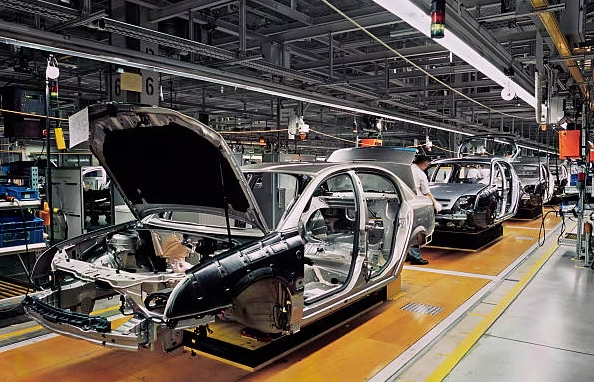

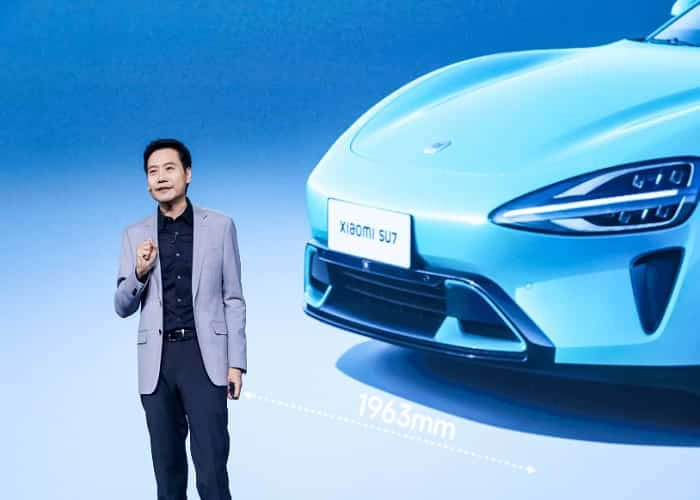
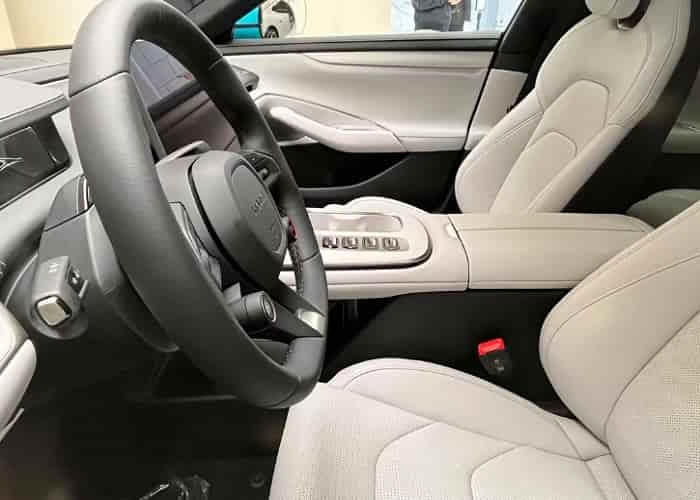


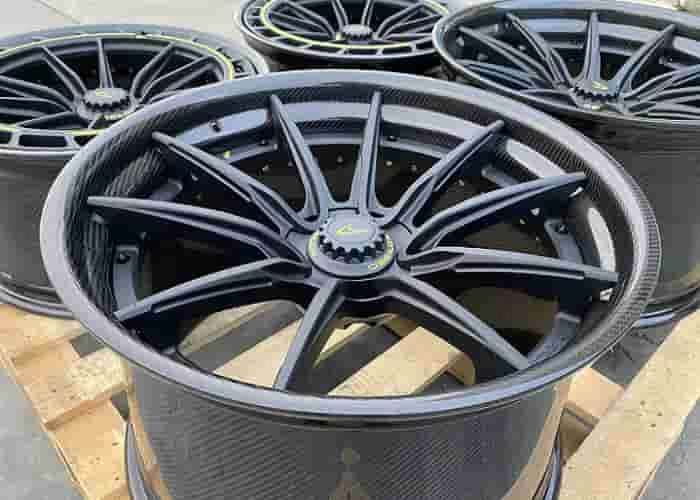



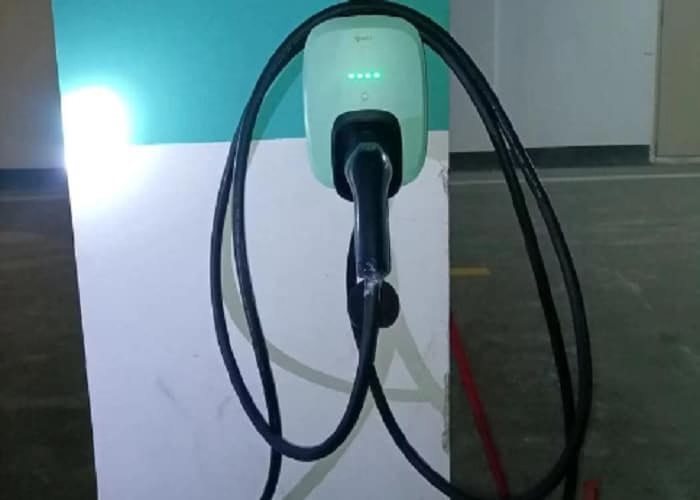



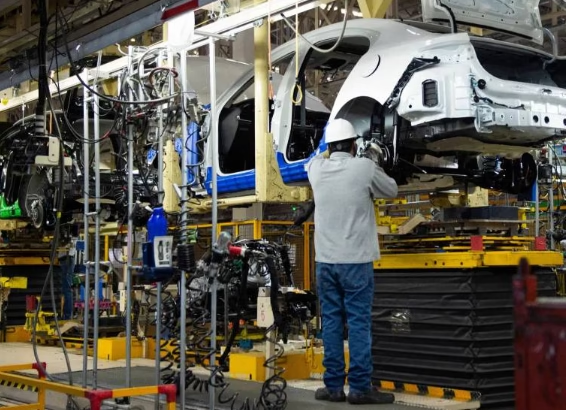
Leave a Reply